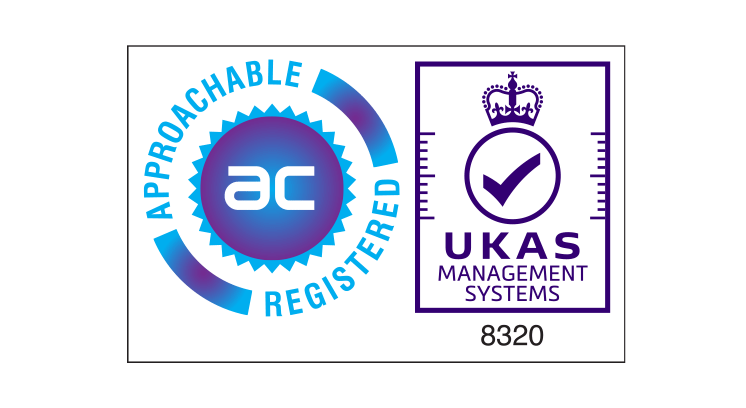Shift Patterns
A shift pattern involves a specific combination of workers, working hours, schedules, and infrastructure tailored to meet specific business needs. It’s essentially a way to organise employees in different rotations, ensuring continuous coverage during operational hours. Employing a shift schedule helps businesses effectively manage resources, uphold customer service standards, and enhance overall operational efficiency.
The primary goal is to ensure adequate staffing at all times, considering factors like coverage needs or fluctuations in man-hours based on the nature of the business, such as a brick-and-mortar shop requiring constant staffing or a factory adjusting worker numbers for varying orders.
Examples of shift patterns and traditional approaches to shift working
The use of shift-work within organisations is growing rapidly in the UK, and unlike part-time and temporary work, tends to involve a larger proportion of the workforce. Finding an appropriate shift-pattern which matches the specific needs of the organisation is therefore critical. It’s estimated that around 5 million people currently work shift patterns in their full-time roles.
There are many conventional shift-patterns, such as ‘4 on-4 off’, which industry utilises, but as businesses grow and customer demands change, many organisations find tailored shift patterns are more appropriate.
In fact, sticking rigidly to a traditional or standard shift pattern when your organisation is experiencing volatile demand and operational change may lead to issues around efficiency, productivity and employee wellbeing.
Totalmobile’s specialist shift planning, rostering and workforce management software and services will help ensure your shift patterns remain flexible and aligned to the needs of your organisation and its employees.
- Shift Planning, Shift Pattern Design
- Rostering
- Scheduling
- Time & Attendance
- Absence & Annual Leave Management
- Working Time Regulation Compliance Checks
- An employee mobile app called myTIME for shift bidding and swapping
Conventional Shift patterns include:
‘2 Shift’:
This model is typically Monday to Friday, 0600-1400 and 1400-2200. Teams of participants usually rotate on a weekly basis. The 0600-1400 shift may be called earlies, mornings, AM, or 6-2, while the 1400-2200 shift may be called lates, afters, afternoons, back shift or 2-10. The default pattern may cover: two x 40 hours = 80 hours per week or two x 37.5 hours per week.
The rate of rotation does not need to be on alternate weeks. Handovers are usually informal. A flying shift change is rare unless the process is complex. These shifts can also be on a ‘fixed’ basis, with ‘regular mornings’ and ‘regular afternoons’. Afternoons are usually less popular than mornings with employees. With this set-up, meal breaks are frequently but not exclusively, paid.
‘Night Shift’:
This model covers typically, but not exclusively, Monday to Friday 2200-0600. The alternative Sunday to Thursday stint tends to be popular with employees. The default cover would be: 5 x 8 hours = 40 hours. When used in conjunction with 2 shift system, it gives 120 hours total. When used in isolation, 4 x 10 hour night shifts are popular. Meal breaks are frequently but not exclusively paid. People who work on ‘Regular Nights’ often do so because it suits them. It should not be assumed a revised system which includes some rotation into days will be welcomed.
3 Shift or Semi Continuous (8 hour shifts, averaging 40 hours per week):
This is frequently 0600 Monday to 0600 Saturday, covering a default 120 hours per week. Usually eight hour based, teams spend a week on each, with a nights, afternoons, morning progression over the three-week cycle.
Patterns of 12 hours are possible over five days, but these are demanding and uncommon. Meal breaks are frequently but not exclusively paid. Operations of six days/144 hours can be covered using eight hour or 12 hour shifts based upon an average 36 hour week.
Staggered days:
This model is typically based on a default averaging 5 x eight hour days. The pattern tends to be spread over six or seven days to provide formal weekend cover. Employees are normally given compensating days off during the week.
The staggered days model is frequently used for plant maintenance or services groups and can incorporate a simple rota based on a two week or three week cycle.
Twilight or Evening Shift:
This pattern provides cover for four or five days per week, usually from 1700 to 2100 hours. This is a popular part time pattern for employees with caring responsibilities since it can provide work when care can be provided by a partner working normal day work.
It is used extensively as a flexible resource in businesses with a seasonal demand profile. It can be used to link a day-working task to nights. Reported to be a highly productive working structure probably because the shifts are short and the population motivated.
Regular 4-on 4 off:
This is a classic continuous working pattern based on 12 hour shifts. Participants work for four consecutive 12-hour days, followed by four consecutive days off, then four consecutive 12-hour nights, followed by four consecutive days off, then four more days and so on.
It’s widely used, but as experts in shift planning, rostering and workforce management, Totalmobile can demonstrate there are more efficient shift pattern options available. The starting day for each set of day or night shifts moves ahead by one day per week. This leads to a long cycle time (16 weeks) before the pattern returns to the original starting place. In a 4-team application, the teams need to take up weeks 1, 5, 9 and 13 relative to each other for the system to deliver the required pattern of presence.
One drawback is the consecutive number of weekends which are affected by the working pattern. 4-on-4-off patterns are also found as days only or nights only variants. The 4-teams average 42 hours per week during the 16 week cycle.
Read More: What is a 4 on 4 off shift pattern?
4 On 6 Off Shift Pattern
A 4 on, 6 off shift pattern is a distinctive staffing approach crafted to offer employees extended rest periods while maintaining uninterrupted coverage in vital operational roles. This structure involves working four consecutive days, followed by a six-day break, each day comprising 8-hour shifts. Implementing this schedule provides frontline employees receive substantial time off, reducing fatigue-related risks and elevating overall performance.
Continentals (4-team, 8-hour or 12-hour patterns, averaging 42 hours per week):
This term is frequently used to describe most types of the continuous pattern. However, it refers specifically to systems where a series of consecutive shifts (usually seven x eight hour shifts or four x 12-hour shifts) includes short blocks of two or three of each of the shifts which the progression is composed.
To avoid impracticalities, the eight–hour shift progression will commence with mornings, and move through afternoons then night shifts followed by two or three rest days. Each sequence ends on nights and issues concerning recovery periods and ‘shift’ lag need to be considered.
Read More: Continental Shift Patterns vs. Panama Shift Patterns
Weekend shifts:
This model typically uses 12-hour shifts, with participants limited to working 12 hours per day both Saturday and Sunday, rotating between days and nights on alternate weeks.
When used in conjunction with a three-shift, semi-continuous pattern, full 24/7 cover can be achieved. There are disadvantages over the isolation of the weekend and the weekday groups. The effect of weekend and nightshift premium upon the 24 hours worked each week increases the value of paid hours to an attractive level which equates roughly to a normal weekly wage.
Tailored shift patterns:
We help organisations to change shift patterns by designing and managing innovative patterns of work that meet demand, often by redeploying hours according to need across the year rather than using fixed weekly rosters. We build flexibility into the rosters and rotas we design, giving you an exact supply of labour to meet the needs of the organisation.
Our shift planning, rostering and workforce management software solution Organise makes this possible, enabling the design of creative ways of working to meet demand, with built-in flexibility to meet changing demand requirements while incorporating the aspirations of your staff.
How do 12 hour shift patterns work?
A 12-hour shift pattern entails employees working continuously for 12 hours, typically starting and ending at specific times. Unlike the traditional 9-5 office hours, this format is prevalent in industries requiring continuous delivery of service, such as hospital emergency departments, nursing, policing, transportation and many more.
To learn more about how a 12-hour shift pattern differs from an 8-hour shift schedule, check out our in-depth guide for an objective viewpoint. Learn which solution is best for your organisation and workers on the front line.
Read Guide: Guide: 8 Vs 12 hour shift patterns










